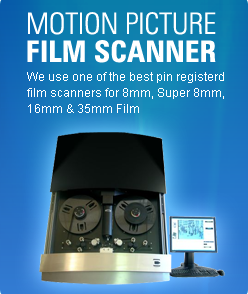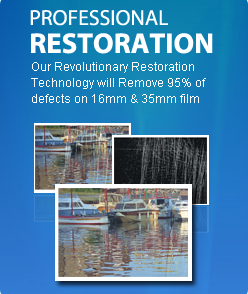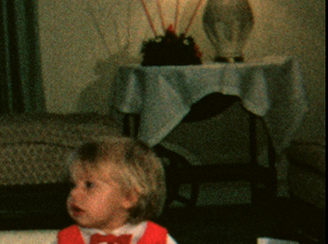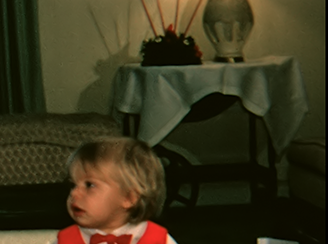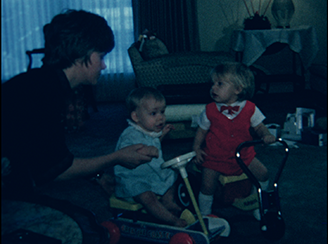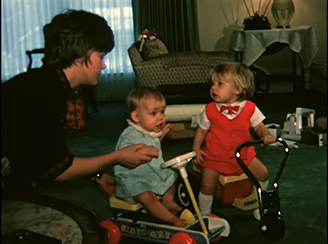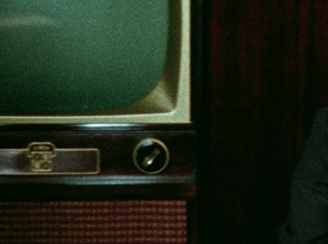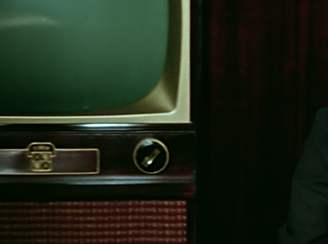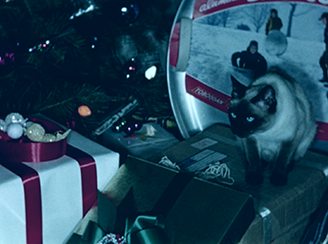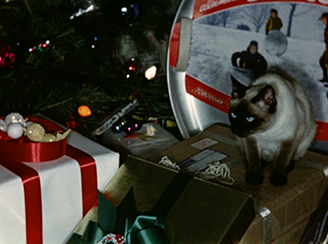
Pro Hollywood Restoration Norwalk
We offer 3 restoration options. Color Correction, Grain Elimination and Stabilization Technology.
About 90% of our Norwalk customers want the color correction and about 75% do the grain elimination. We do also offer image stabilization. It adds a nice touch to those old home movies.
Color correction is very important for amateur film because we will be able to recover more footage that was shot too dark or has darkened as part of the aging process. The scanner monitors the light and color balance and will change it based on pre-determined algorithms. This means it will pump more light through film that is dark and it will back off on film that is too bright. This will allow us to recover footage that would normally be too dark or too light. In addition, after the scan, an editor will go through the footage looking at skin tone and things like the color of the sky to order to make sure it looks correct. You can see in the examples below how much better the images look with our 2 pass color correction.
Grain is on all film. Look at the "Before" picture below compared to the "After" picture. These little dots muddy up the image and take away from the content you care most about. Now, look at the After picture on the right. This is what you really want to see. We do recommend Grain Elimination on all film for our Norwalk customers.
Most amateur films have some stabilization issues just because of the way the film was shot. But, most people are used to seeing this on old movie film (See example video clip below). So, we see stabilization as a nice to have but not required. If you can afford to do it then we would recommend it. If it pushes you outside your budget then we would just recommend the Grain Elimination technology.
Super 8 Film Examples Norwalk
|
|
Before |
After |
|
|
|
|
Before |
After |
16mm Film Examples
|
|
Before |
After |
|
|
|
|
16mm Before |
16mm After |
Norwalk Fun Facts: Founded in 1640 and incorporated eleven years later, Norwalk has counted agriculture, coastal trade, manufacturing and shipbuilding among its industries. Once nicknamed "Oyster Town", Norwalk has long relied on oyster farming as its principal industry which even today continues to make the city Connecticut's largest oyster producer. The city of Norwalk, part of Fairfield County, lies along the Long Island Sound in southwestern Connecticut about 33 miles southwest of New Haven and 48 miles northeast of New York City. Bordered by Darien, New Canaan, Westport and Wilton, the city is serviced by Interstate I-95, U.S.
Connecticut Fun Facts: One of the original 13 colonies and one of the six New England states, Connecticut is located in the northeastern corner of the country. Initially an agricultural community, by the mid-19th century textile and machine manufacturing had become the dominant industries. The home of Eli Whitney and Samuel Colt, Connecticut was a leading manufacturer of guns and other arms. Today Connecticut lies in the midst of the great urban-industrial complex along the Atlantic coast, bordering Massachusetts to the north, Rhode Island to the east, Long Island Sound to the south and New York to the west.
